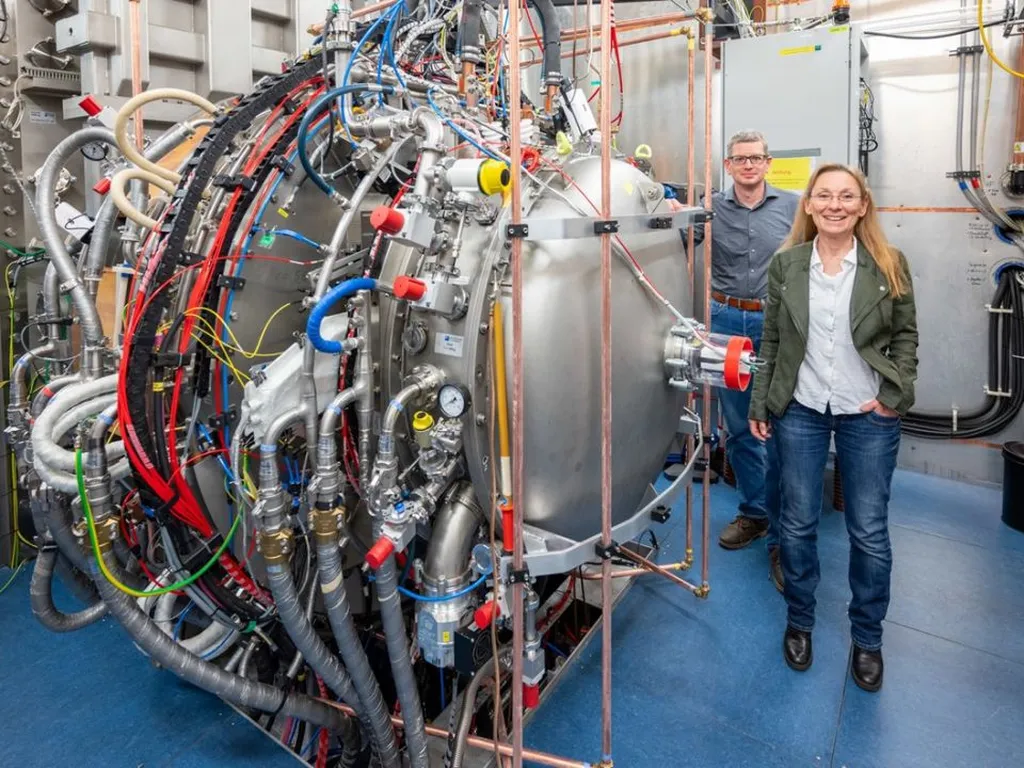In a significant stride toward understanding plasma behavior in fusion reactors, researchers at the Max Planck Institute for Plasma Physics and the University of Seville have unveiled new insights into ion heat transport and neoclassical theory. The study, led by Dr. Pablo Cano-Megias, was recently published in the journal *Nuclear Fusion* (previously known as *Fusion Research*).
At the heart of the research lies the ASDEX Upgrade tokamak, a crucial experimental device in the quest for sustainable fusion energy. The team utilized a high-resolution main ion charge exchange recombination spectroscopy system to characterize the edge deuterium temperature (T_D) and toroidal velocity (v_ϕ,D) in a metal wall environment—a first of its kind. “This new diagnostic tool has allowed us to probe the edge of H-mode plasmas with unprecedented detail,” Cano-Megias explained.
The experiments revealed an unexpected temperature difference between main ions (T_D) and impurities (T_z) when increasing the power of electron cyclotron resonance heating (P_ECRH). This discovery has profound implications for understanding heat transport in fusion plasmas. “We found that T_D can be greater than T_z, which challenges some of our existing assumptions about ion heat transport,” Cano-Megias noted.
The team used the new temperature measurements to solve multi-ion heat transport equations with the ASTRA transport code. They compared the interpreted deuterium (χ_D) and impurity (χ_z) heat diffusivities to fluid (TGLF) and gyrokinetic (GKW) models. While the dependence of a qualitatively similar χ_D/χ_z on the ion to electron heat flux (Q_i/Q_e) was identified in both experiment and simulation, discrepancies in the absolute value between the two were found when temperature differences between deuterium and impurities were present.
The research also highlighted the importance of considering temperature differences between ion species for accurate impurity ion heat transport description. “Assuming a single ion species and equal temperatures gives reasonable estimates of χ_D, but the evaluation of χ_z is very sensitive to ion temperature differences,” Cano-Megias emphasized.
Moreover, the study compared differences between v_ϕ,D and v_ϕ,z to neoclassical calculations. Neoclassical theory accurately described v_ϕ,D in the steep gradient region but not at the pedestal top nor bottom, underscoring the complexity of edge transport phenomena.
The findings of this research have significant implications for the energy sector, particularly in the development of fusion energy. Understanding and accurately modeling ion heat transport is crucial for optimizing plasma performance and achieving sustainable fusion reactions. This study provides a deeper understanding of the underlying physics, paving the way for more efficient and effective fusion reactors.
As the world looks toward a future powered by clean, sustainable energy, research like this brings us one step closer to realizing the potential of fusion energy. The insights gained from this study will undoubtedly shape future developments in the field, driving innovation and progress in the quest for a sustainable energy future.

